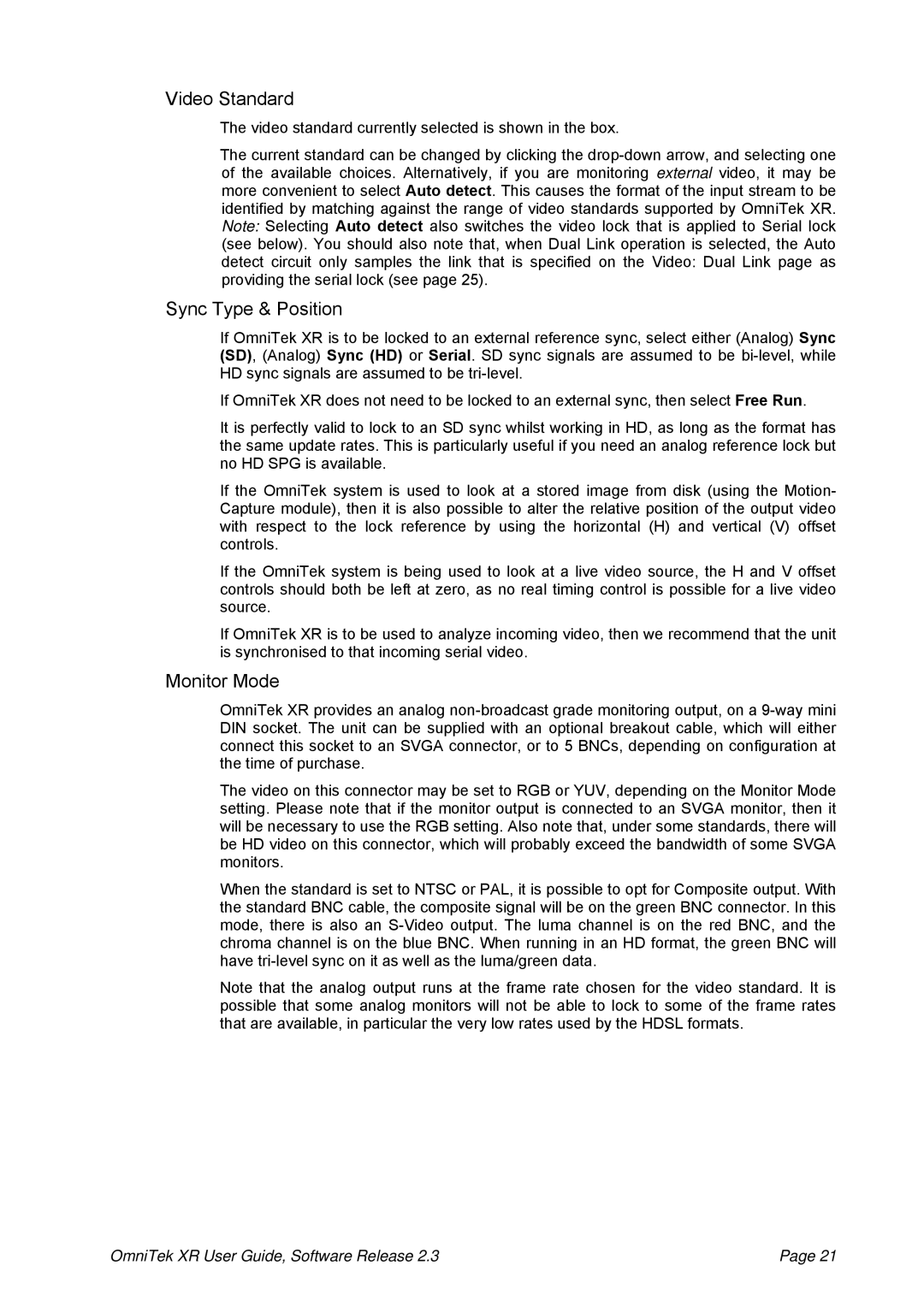Video Standard
The video standard currently selected is shown in the box.
The current standard can be changed by clicking the
Sync Type & Position
If OmniTek XR is to be locked to an external reference sync, select either (Analog) Sync (SD), (Analog) Sync (HD) or Serial. SD sync signals are assumed to be
If OmniTek XR does not need to be locked to an external sync, then select Free Run.
It is perfectly valid to lock to an SD sync whilst working in HD, as long as the format has the same update rates. This is particularly useful if you need an analog reference lock but no HD SPG is available.
If the OmniTek system is used to look at a stored image from disk (using the Motion- Capture module), then it is also possible to alter the relative position of the output video with respect to the lock reference by using the horizontal (H) and vertical (V) offset controls.
If the OmniTek system is being used to look at a live video source, the H and V offset controls should both be left at zero, as no real timing control is possible for a live video source.
If OmniTek XR is to be used to analyze incoming video, then we recommend that the unit is synchronised to that incoming serial video.
Monitor Mode
OmniTek XR provides an analog
The video on this connector may be set to RGB or YUV, depending on the Monitor Mode setting. Please note that if the monitor output is connected to an SVGA monitor, then it will be necessary to use the RGB setting. Also note that, under some standards, there will be HD video on this connector, which will probably exceed the bandwidth of some SVGA monitors.
When the standard is set to NTSC or PAL, it is possible to opt for Composite output. With the standard BNC cable, the composite signal will be on the green BNC connector. In this mode, there is also an
Note that the analog output runs at the frame rate chosen for the video standard. It is possible that some analog monitors will not be able to lock to some of the frame rates that are available, in particular the very low rates used by the HDSL formats.
OmniTek XR User Guide, Software Release 2.3 | Page 21 |
